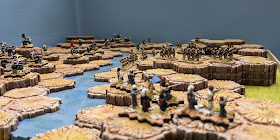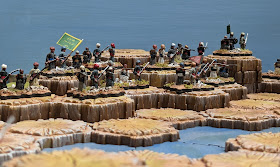After I wrote my recent blog post entitled HITTING A BRICK WALL, I have done a lot of thinking. One thing that I did was to read a blog post that I wrote back on 11th January this year. It was entitled A LONG, HARD THINK ABOUT MY FUTURE WARGAMING, and in some of the concluding paragraphs I wrote the following:
I have been mulling what my future wargaming priorities should be for some time. Until very recently I was still very undecided … and then I read an obituary about the late John Ruddle’s garden wargaming, and things began to fall into place.
In the obituary, the wargaming part of John’s garden was described as being L-shaped, with a long left-hand border that was split into Britain, France, Germany, Belgium, and Italy. At right-angles to this and across the bottom of the garden were sections that represented Africa and the Northwest Frontier of India. At the join of the two section was Turkey, and the lawn represented the oceans. My immediate reaction was ‘I’d love to do something like that, but my garden isn’t suitable.’ However, after some thought, I decided that an indoor version of something like it might be possible.
My current thinking is along the lines that I could create a terrain board for each of my Belle Époque imagi-nations using the game board/map from Waddington’s CAMPAIGN game as a guide. These terrain boards could be stored in my future wargame/toy room and be brought out and used as and when required. It would allow me to exercise my terrain modelling skills (something that I have recently rediscovered and that I really do enjoy!) and become the basis of an imaginary wargaming world where nations – both large and small – are constantly vying with each other.
I now realise that this might have been a bit too ambitious a project ... but I think that there is a kernel of a good idea in it. I don't think that I will have room to build and store a large number of terrain boards but I might have room for a number of home-made terrain cloths. Alternately, I might be able to find a way to use my Hexon II hex terrain system and my mini-campaign board.
This appears to run contrary to what I wrote so recently, but I can see no reason why I cannot buy a laptop with a bigger screen, and Sue has – within reason – agreed to get anything that I need for my toy/wargame room. This would remove the two things that are currently restricting the work on my Belle Époque project, and as my mobility improves, these restrictions should ease.
The brick wall is still there … but I’m finding ways to get around it.

















































